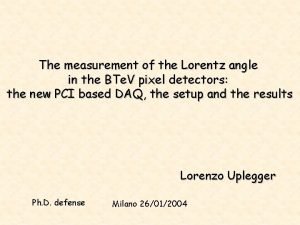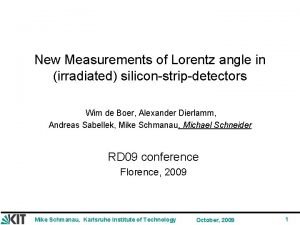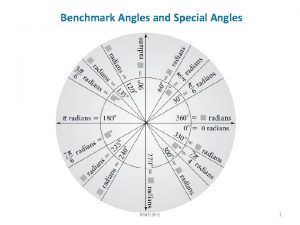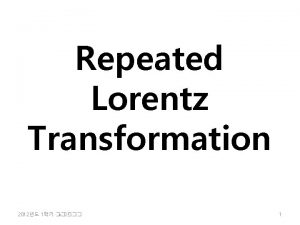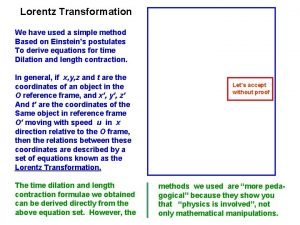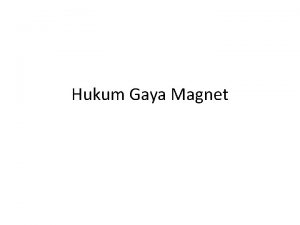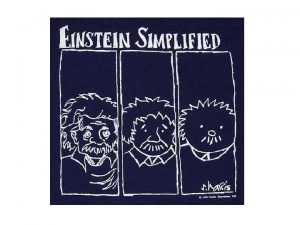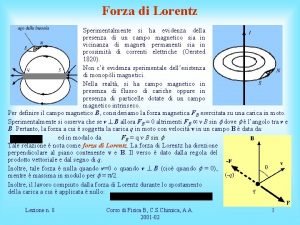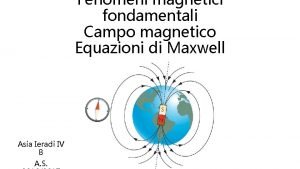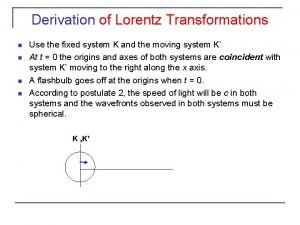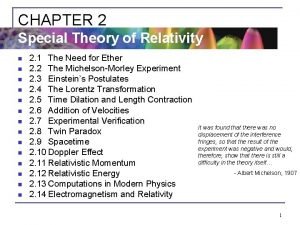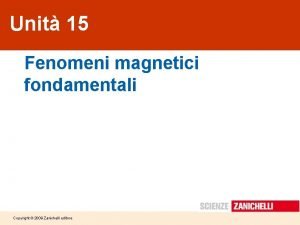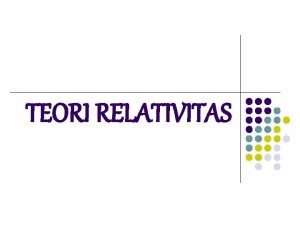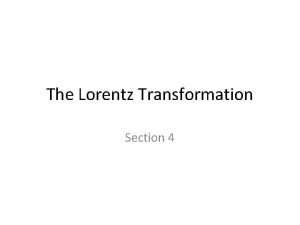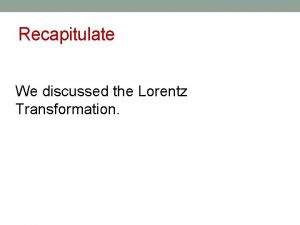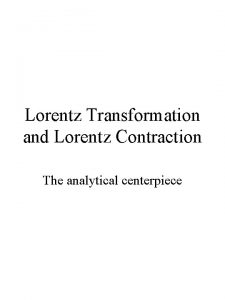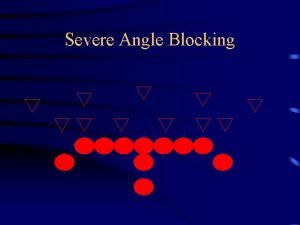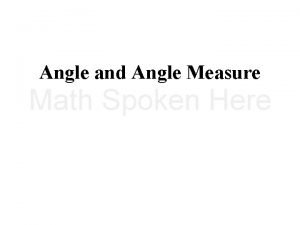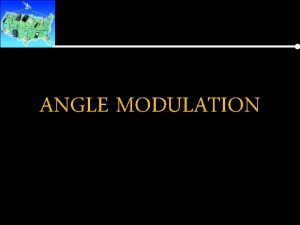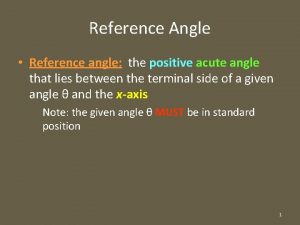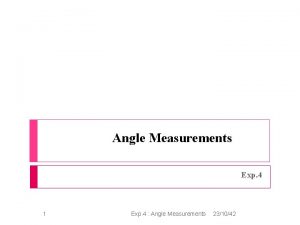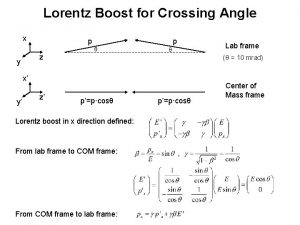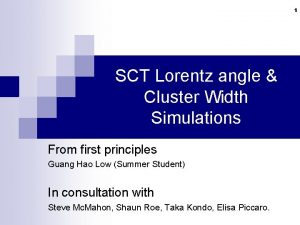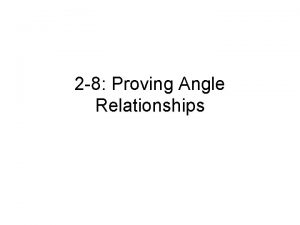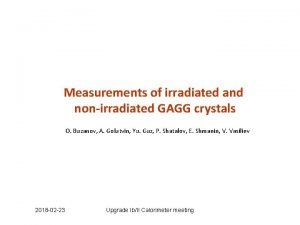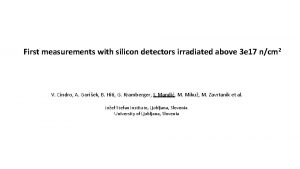New Measurements of Lorentz angle in irradiated siliconstripdetectors


















- Slides: 18

New Measurements of Lorentz angle in (irradiated) silicon-strip-detectors Wim de Boer, Alexander Dierlamm, Andreas Sabellek, Mike Schmanau, Michael Schneider RD 09 conference Florence, 2009 Mike Schmanau, Karlsruhe Institute of Technology October, 2009 1

What is new? • Measured real CMS ministrip sensors (instead of ministrips from HERA-B, which had smaller pitch) CMS sensors allowed to measure to much higher bias voltages, use 500 um for better sensitivity • Measured RD 50 n-in-p sensors to get much better Lorentz angle measurements for electrons • Measure Lorentz angle in highly irradiation sensors Mike Schmanau, Karlsruhe Institute of Technology October, 2009 2

Outline • • Experimental Setup Sensors New parametrization of Lorentz angle model Results Comparison with CMS data Lorentz angle over fluence Summary Mike Schmanau, Karlsruhe Institute of Technology October, 2009 3

Experimental Setup (1) Mike Schmanau, Karlsruhe Institute of Technology October, 2009 4

Experimental Setup (2) • Sensor with readout-chip Pre. Mux (=APV w. o. Pipeline) on hybrid • Hybrid mounted on structure for magnet • Optical fibers for laser • red laser for best signal • infrared laser for MIP-like signal Mike Schmanau, Karlsruhe Institute of Technology October, 2009 5

Experimental Setup (3) Mike Schmanau, Karlsruhe Institute of Technology October, 2009 6

Experimental Setup - Magnet • Magnet lab of ITP at Forschungszentrum Karlsruhe • Measurements of lorentz shift up to 8 T Mike Schmanau, Karlsruhe Institute of Technology October, 2009 7

Sensors • Measurement of depletion voltage by finding the knee in the 1/C 2 over U plot • Irradiated at Karlsruhe Kompaktzyklotron with 25 Me. V protons • Hardnessfactor 1. 85 Mike Schmanau, Karlsruhe Institute of Technology October, 2009 8

Signals of unirradiated sensors Signal in m. V Electrons with F=0 n/cm 2 at 127 K and Ubias=40 V Strip number Mike Schmanau, Karlsruhe Institute of Technology October, 2009 9

Lorentz-shift of unirradiated sensors Mike Schmanau, Karlsruhe Institute of Technology October, 2009 10

Parametrization of Lorentz angle model An Algorithm for calculating the Lorentz angle in silicon detectors. V. Bartsch, W. de Boer, J. Bol, A. Dierlamm, E. Grigoriev, F. Hauler , S. Heising, L. Jungermann. Nucl. Instrum. Meth. A 497: 389 -396, 2003. e-Print: physics/0204078 tan L=ev. B/e. E=v/E B=r. HµB evx. B e. E r. H=Hall factor, depends on scattering mechanism mobility New fit of the 4 parameters: shaping exponent b temperature exponents electrons Mike Schmanau, Karlsruhe Institute of Technology holes October, 2009 11

New: Parametrization of hall scattering factor Parabolic dependence of hall scattering factor on electric field standard value Good description of data A constant r. H seems not appropriate (1. 1 expected for small fields (i. e. small Lorentz angles, implying little curvature between scatterings) valid for small B fields Mike Schmanau, Karlsruhe Institute of Technology October, 2009 12

Results (1) holes CMS sensor (p-in-n) NEW OLD Fit ho le s deviations at high E-fields Fit Mike Schmanau, Karlsruhe Institute of Technology October, 2009 13

Results (2) electrons n-in-p (float zone) NEW OLD deviations at low temp. el ec tr on s Fit deviations at low temp. Fit Mike Schmanau, Karlsruhe Institute of Technology October, 2009 14

Lorentz angle from cluster width in CMS Mike Schmanau, Karlsruhe Institute of Technology October, 2009 15

Comparison with previous results Mike Schmanau, Karlsruhe Institute of Technology October, 2009 16

Lorentz angle versus fluence 40 V electrons 300 V 500 V 1000 V holes 1000 V Strong dependence of Lorentz angle on fluence? Change of sign at high fluences for electrons? ? Non uniform E inside thin depletion zone? Mike Schmanau, Karlsruhe Institute of Technology October, 2009 17

Summary • New Lorentz measurements for holes with real mini-CMS sensors (100 orientation, previous partially 111) • Slight changes, but still incompatible with CMS minimal cluster width method • Since Lorentz angle varies with fluence, in situ measurement by analog read out is needed for SLHC. • Completely new parametrization for detectors with electron drift • Strange change in sign of Lorentz shift of electrons at high fluences? ? Mike Schmanau, Karlsruhe Institute of Technology October, 2009 18
 Irradiated food symbol
Irradiated food symbol Applications of nuclear chemistry
Applications of nuclear chemistry Lorentz angle
Lorentz angle Lorentz angle
Lorentz angle Segment lengths in circles
Segment lengths in circles Special angles
Special angles Lorentz transformation matrix
Lorentz transformation matrix Psk lorentz
Psk lorentz Lorentz factor
Lorentz factor Hukum lorentz
Hukum lorentz Proof of lorentz transformation
Proof of lorentz transformation Rumus gaya lorentz
Rumus gaya lorentz Forza di lorentz regola della mano destra
Forza di lorentz regola della mano destra Legge di faraday
Legge di faraday Lorentz transformation equation derivation
Lorentz transformation equation derivation Lorentz transformation equation
Lorentz transformation equation Tesla unità di misura
Tesla unità di misura Contoh soal transformasi galileo
Contoh soal transformasi galileo Lorentz
Lorentz


